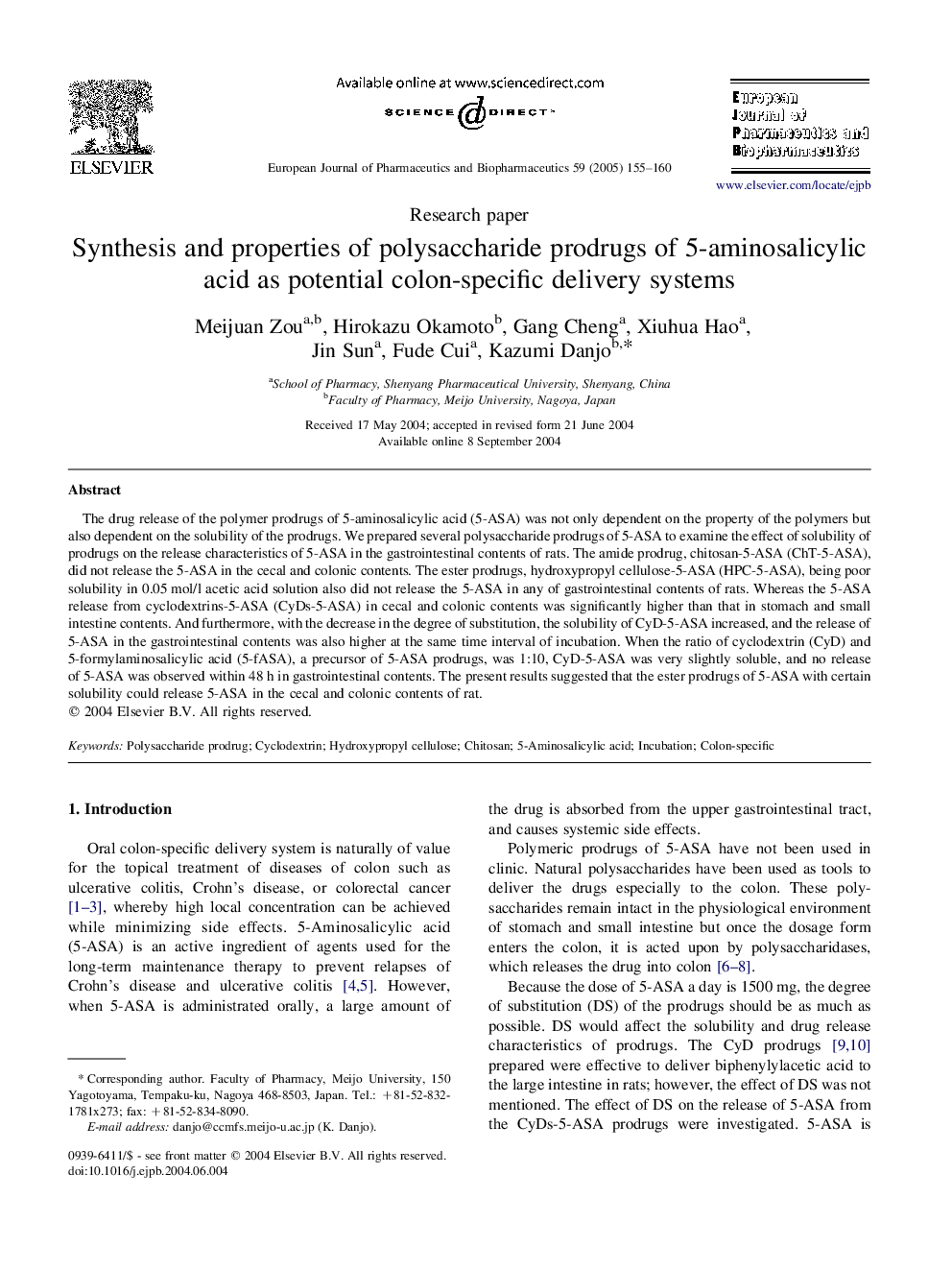| Article ID | Journal | Published Year | Pages | File Type |
|---|---|---|---|---|
| 9901566 | European Journal of Pharmaceutics and Biopharmaceutics | 2005 | 6 Pages |
Abstract
The drug release of the polymer prodrugs of 5-aminosalicylic acid (5-ASA) was not only dependent on the property of the polymers but also dependent on the solubility of the prodrugs. We prepared several polysaccharide prodrugs of 5-ASA to examine the effect of solubility of prodrugs on the release characteristics of 5-ASA in the gastrointestinal contents of rats. The amide prodrug, chitosan-5-ASA (ChT-5-ASA), did not release the 5-ASA in the cecal and colonic contents. The ester prodrugs, hydroxypropyl cellulose-5-ASA (HPC-5-ASA), being poor solubility in 0.05Â mol/l acetic acid solution also did not release the 5-ASA in any of gastrointestinal contents of rats. Whereas the 5-ASA release from cyclodextrins-5-ASA (CyDs-5-ASA) in cecal and colonic contents was significantly higher than that in stomach and small intestine contents. And furthermore, with the decrease in the degree of substitution, the solubility of CyD-5-ASA increased, and the release of 5-ASA in the gastrointestinal contents was also higher at the same time interval of incubation. When the ratio of cyclodextrin (CyD) and 5-formylaminosalicylic acid (5-fASA), a precursor of 5-ASA prodrugs, was 1:10, CyD-5-ASA was very slightly soluble, and no release of 5-ASA was observed within 48Â h in gastrointestinal contents. The present results suggested that the ester prodrugs of 5-ASA with certain solubility could release 5-ASA in the cecal and colonic contents of rat.
Related Topics
Life Sciences
Biochemistry, Genetics and Molecular Biology
Biotechnology
Authors
Meijuan Zou, Hirokazu Okamoto, Gang Cheng, Xiuhua Hao, Jin Sun, Fude Cui, Kazumi Danjo,
